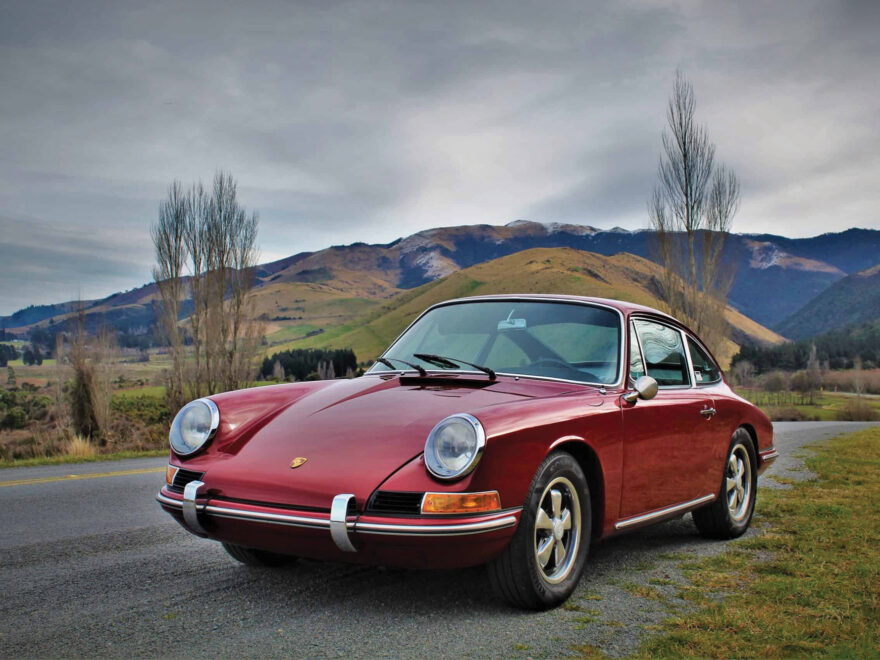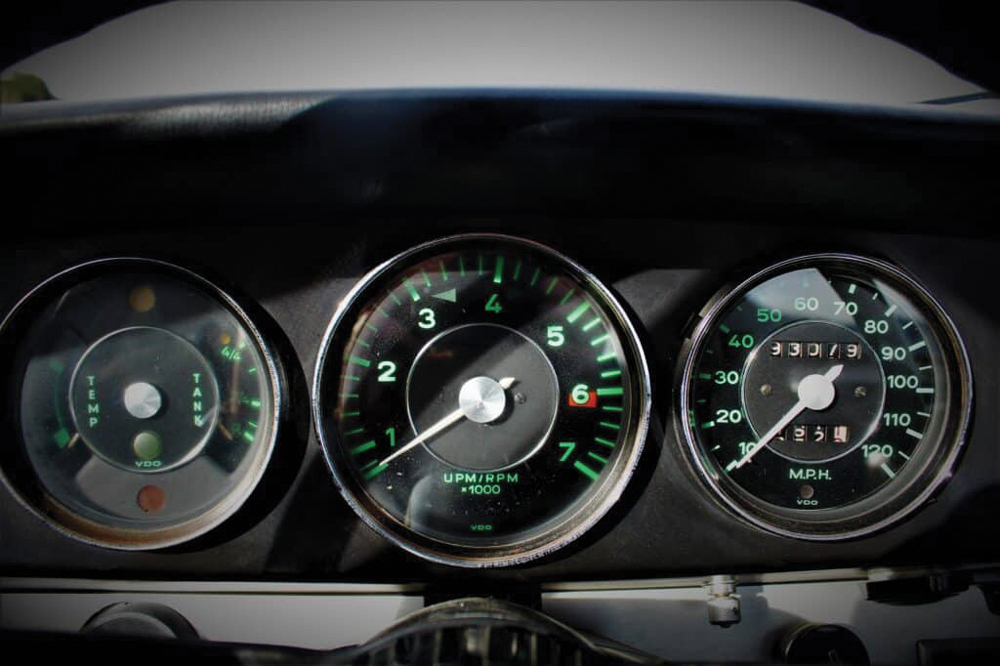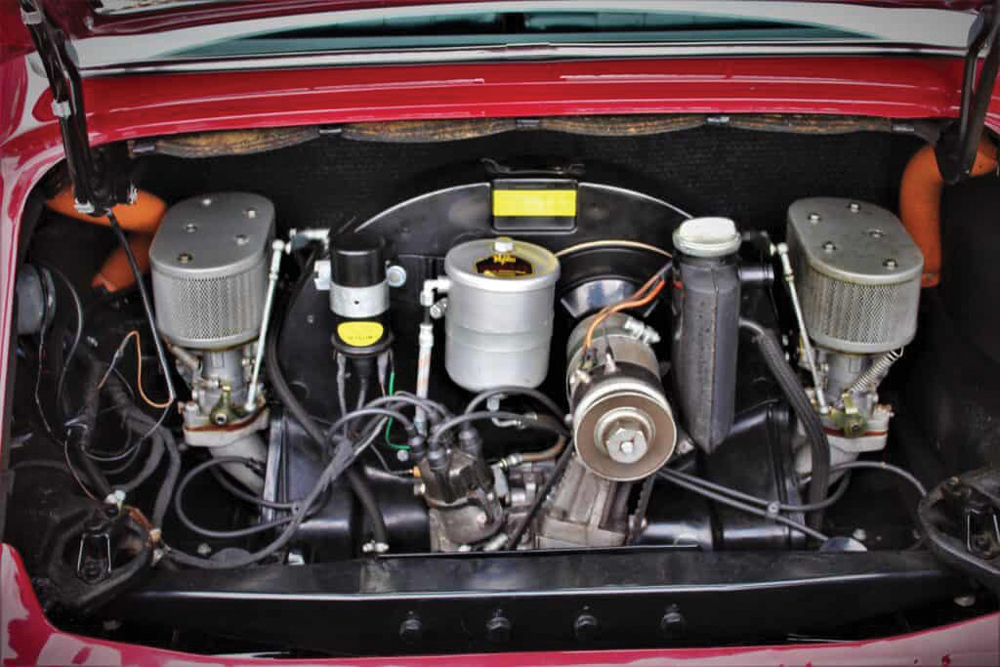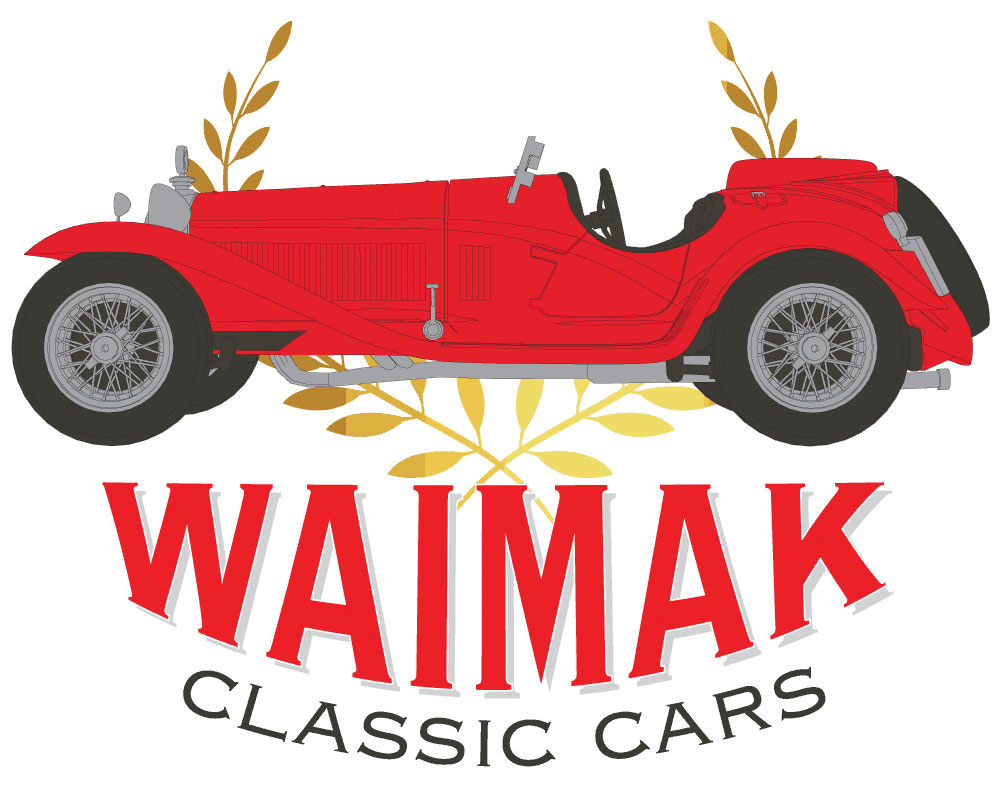It’s really hard to imagine Porsche without the 911. When it was launched in 1964, Porsche was keen to cement the 911 as the company’s halo model.
However, the 911 did not get off to a flying start straight away. Many accused Porsche of moving upmarket too soon, neglecting buyers who wanted a new variation of the much-loved 356C coupe. In response, Porsche decided to offer an entry level variant with two less cylinders and a lower price tag. This became known as the 912.
From 1965 to 1969, Porsche would build over 32,000 912s in Coupe or Targa form. It was so popular during this time it even pulled ahead of the 911 in the Porsche sales figures. As mentioned, the 912 was not an air-cooled flat six like its 911 counterpart, but sported an air-cooled 1.6-litre flat four. This is essentially the same engine Porsche ran in the 356C.
The Type 616/36 flat four was good for 102hp and 122Nm of torque sent to the rear wheels via a four-speed manual gearbox. The 912 you see here has been fitted with a five-speed. It was also much lighter than the 911, tipping the scales at 965kg. Zero to 100km/h could be achieved in 11.2 seconds and top speed was reckoned to be 192km/h.
The Butzi styling would remain the same, but Porsche would leave off many additives found on the 911, creating a more back to basics car. Things like chrome bumpers and steel wheels became the norm, but this example gets the 911’s more well-known Fuchs alloys.
The 912 would return to the US market after production ended in 1969 in the form of the 912E. This 1976 variant was not sold outside the US and would feature the same Volkswagen sourced 2.0L flat four used in the Porsche 914 and the American 5mph impact bumpers front and rear.
This particular 912 also spent much of its life in the US, with its first two owners based in New Mexico and Arizona. Restored four years ago, it really is a stunning looking thing. Seeing this 912 up close comes with the realisation that pictures really don’t do it justice. Inside and out, its pretty mint.
Hop inside and the vinyl seats, while not the most supportive I have ever experienced, are certainly comfortable. This being the “back to basics” variant of the 911, the 912 has the classic Porsche instrument cluster with rev counter taking centre stage. You also have a Porsche embossed plate covering where a stereo otherwise would have been.
There is also an ashtray and a cigarette lighter (because everyone lit up back then, indicators, light switch, choke and that’s pretty much it. No tech filled distractions here, just the drive.
A quick twist of that Porsche embossed ignition key and that burble, which could only be the mechanical sound of an air-cooled engine, wakes up and settles into a sedate idle. Some may argue the 912’s air-cooled four pot burble is not as nice as its flat six counterparts. However, a few sharp presses of the loud pedal still results in a mechanical, yet sweet sounding engine note. It is still quintessentially Porsche in every way.
Also very Porsche, is the long throw for the five speed manual box. Despite this, it is a joyous sensation going through the gears. The 912 is another classic sports car where I found myself shifting just for the sensation alone.
After getting reacquainted with driving a left-hand-drive car on Kiwi roads, the 912 becomes very easy to get into its stride. It also wasn’t long before the temptation to give the 912 some stick became all too much to resist.
That 1.6L flat four doesn’t have a great deal of power, but what power there is can be used pretty much all the time when going hard. Between 3000 to the redline at 6000rpm is the sweet spot for the 912. While you won’t be setting any speed records, the additives of sweet engine noise behind you and soaking up your surroundings ahead above those distinctive twin body humps will have you giggling.
The steering wheel may be a bit bigger when compared with other sports cars of the era. However, its certainly no less of a burden to helm. The steering feel is also top notch. You have an almost telepathic feeling as to what the wheels are up to. Plus, when you feed in just the correct amount of left or right, it is incredibly rewarding in the corners.
Having two less cylinders over the 911 also means there is less weight at the rear. This results in a car which is more manageable when giving it the beans in the bends. You don’t get the corner planted feeling and there is a smattering of body roll, but the 912 is an utter joy.
It’s cult following may not be as big as its sibling. However, the 912 is still a proper classic Porsche in every way. Who cares that it doesn’t blow your mind with acceleration and intense grip. The 912 is all about the joy of driving and it certainly excels on that front every time.
Words: Ben Selby





